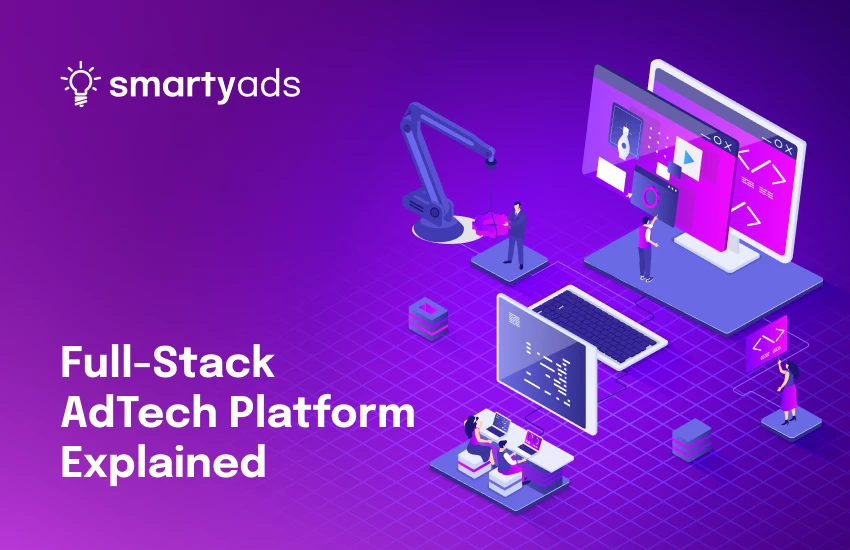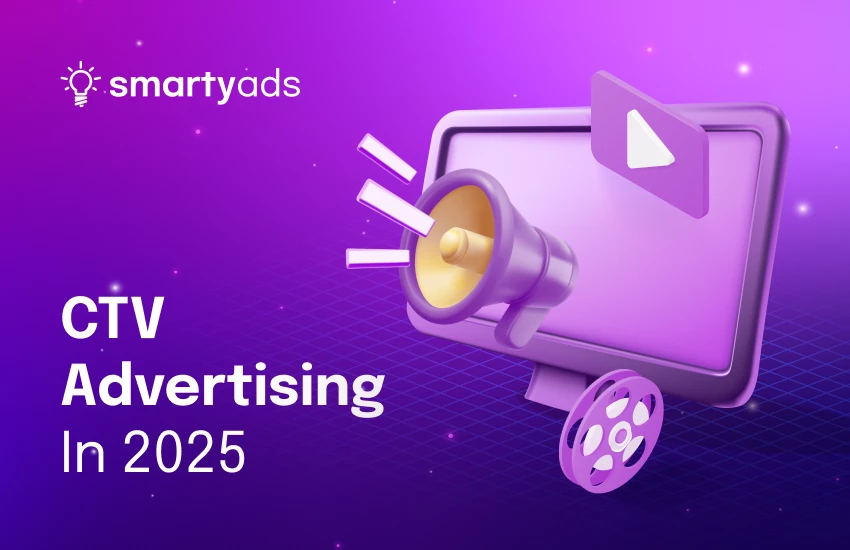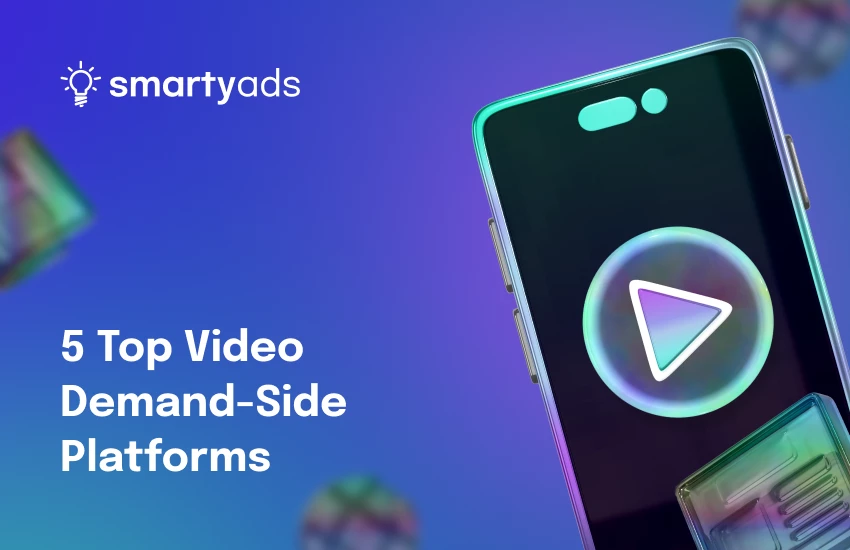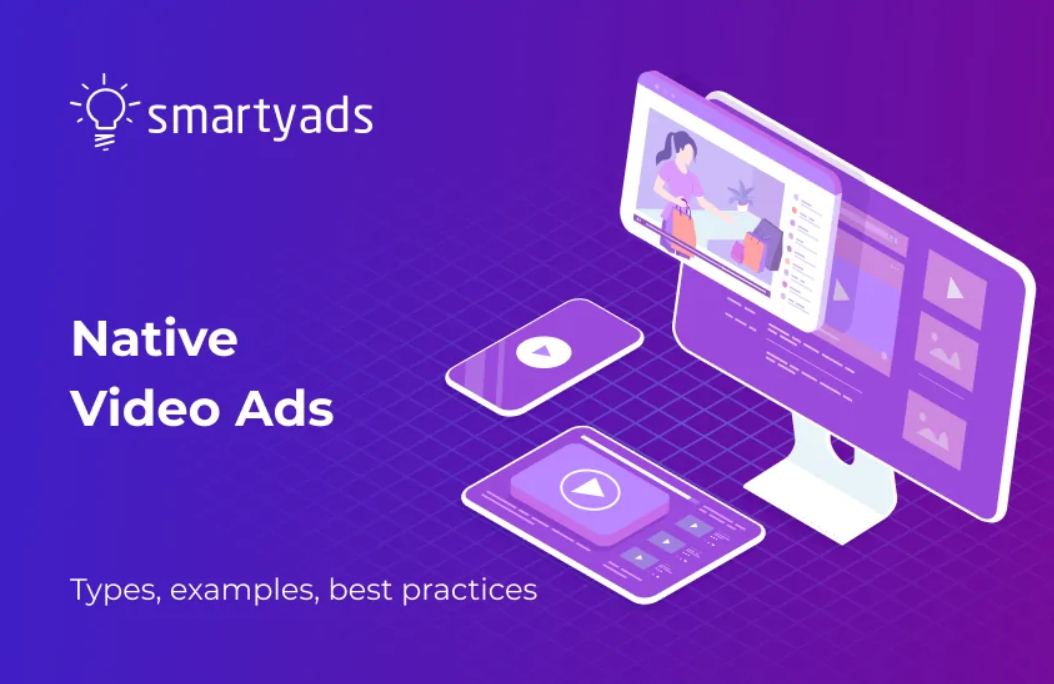The digital ad market moves fast. What worked yesterday is no longer enough today. Mobile-first approaches are giving way to full omnichannel strategies. Marketers need everything at once: analytics, creative optimization, real-time attribution, and seamless campaign management.
Single-channel tools help, but they also create a new problem: fragmentation. Over the years, thousands of martech and adtech solutions have appeared. According to recent stats, there are already more than 7,000 of them on the market.
For advertisers and publishers, it creates extra complexity. Instead of juggling disconnected tools, many now turn to full ad tech stacks — platforms that combine everything needed for programmatic in one place.
Let’s take a closer look at how a full-stack ad platform for publishers works and why they help solve the fragmentation challenge.

What is a full-stack AdTech platform?
Full-stack AdTech platform is one system that combines all key tools for digital advertising. It connects both buy and sell sides. Advertisers run and optimize campaigns. Publishers sell inventory. Everything happens inside one connected ad tech stack, from targeting and bidding to reporting and analytics. No need for multiple vendors. Full control, full transparency.
Core components of a full-stack AdTech platform
The programmatic advertising ecosystem is complex. As a rule, it includes ad exchanges, ad networks, demand-side platforms, supply-side platforms, and data management platforms. Each of these elements plays an integral part in the media-trading process.
Demand-side platforms
A Demand-side platform is created to serve the needs of advertisers, marketers, agencies, and media buyers who want to purchase digital inventory online. DSP automates the process of inventory purchasing via algorithmic buying and targets the users in case their data corresponds to the chosen targeting settings.
Supply-side platforms
A supply-side platform is an equivalent of the demand-side platform created for publishers, media-sellers, and app developers who want to monetize their inventory with targeted ads. Programmatic automates real-time auctions so that inventory could be sold automatically and without remnants.
Ad networks
Ad networks accumulate inventory from publishers and aggregate it on a single platform in order to resell it to advertisers for certain commission. Ad networks share the same goal with ad exchanges, however, they have certain differences in inventory management and basic principles of work.
Ad exchanges
An ad exchange is an open marketplace designed to let advertisers and publishers trade directly utilizing RTB protocol. Ad Exchanges can also provide access to a greater pool of inventory because they feature more connections. Additionally, some ad exchanges can aggregate inventory across particular traffic type, vertical, or quality.
Data management platforms
Data management platforms aggregate customers information. They can be used for multiple marketing purposes but practically most often used with DSP’s in order to make targeting more precise and sophisticated.
Obviously, the programmatic ecosystem encapsulates a multitude of solutions that can serve as a foundation for successful media trading. Ad stacks are ad tech complexes that already involve media-buying, media-selling, and data activation solutions under one roof.
In other words, they encapsulate essential components for media-buying and selling that otherwise are scattered across the vast programmatic ecosystem. As a rule, ad stacks belong to the ad tech providers that grow and develop their programmatic business over time, add new solutions, and integrate new partners.
How ad stacks prevent fragmentation?
In the majority of cases, platforms in ad tech stack are interconnected in order to intensify the chance for successful deal closing. The more supply or/and demand sources the platform is connected to, the more opportunities publishers and advertisers have to find what they need. By contrast, a standalone DSP or SSP is limited by the number of currently connected partners and core platform functionality.
Additionally, such an organization provides a far better view on inventory and the ability to audit all partnership commitments which is impossible when platforms belong to different ad tech providers. This enables publishers and advertisers to run more transparent and holistic advertising campaigns and avoid problems caused by fragmentation.
Benefits of using a full-stack AdTech platform
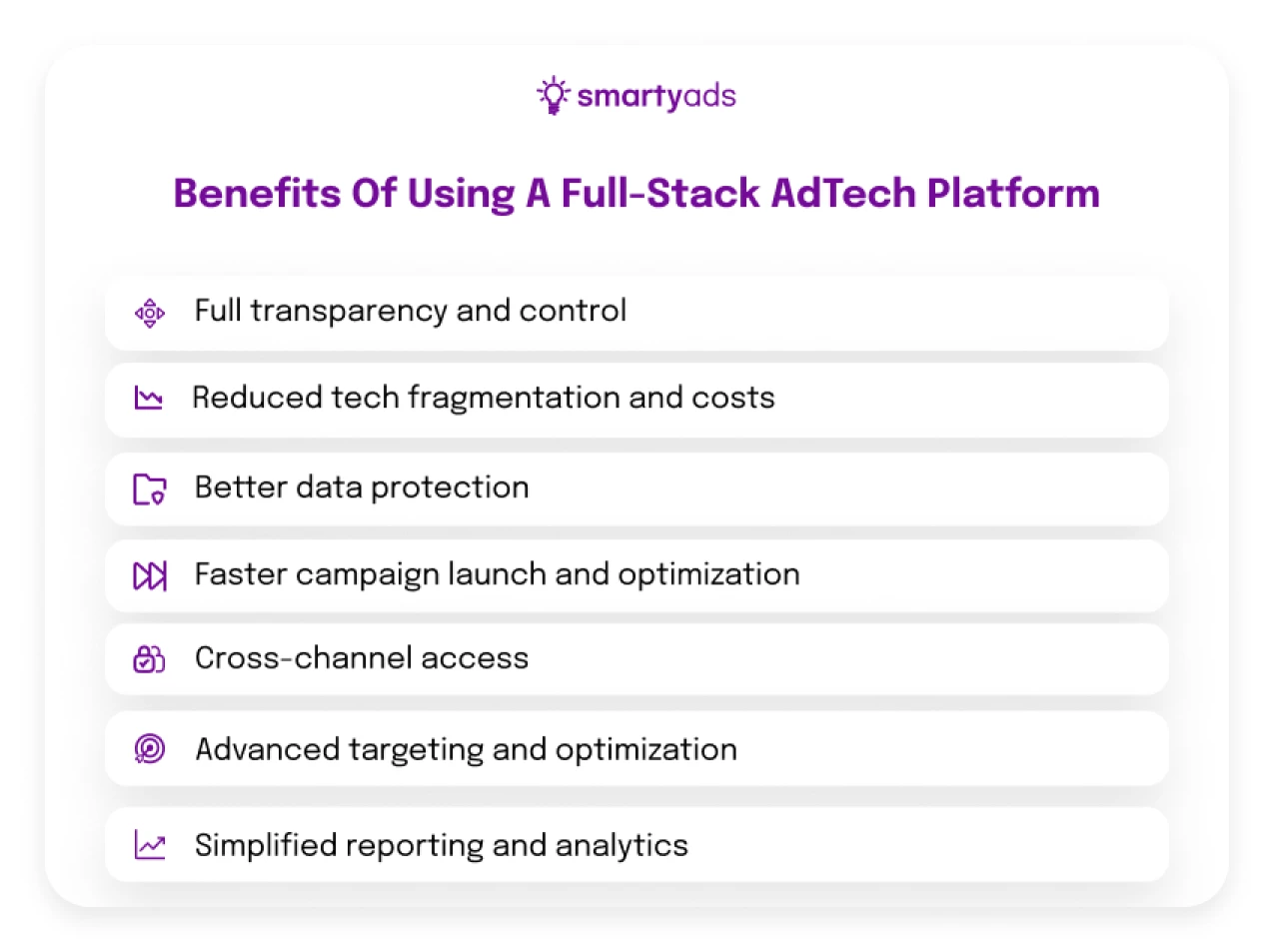
Full-stack platforms solve many of the daily problems advertisers and publishers face. They simplify operations, improve performance, and give you full control over your programmatic business.
Full transparency and control
With a full-stack ad tech stack, you control every step of media trading. Advertisers track budgets, impressions, audiences, and ROI. Publishers see demand partners, pricing, and inventory status in real time. No hidden commissions. No black box. You always know where your money goes and how campaigns perform.
Reduced tech fragmentation and costs
Normally, you'd need 5–7 different tools for programmatic: DSP, SSP, DMP, analytics, optimization. A full-stack solution combines them into one. This simplifies integrations, reduces costs, minimizes human errors, and cuts daily operational work. You focus on strategy, not fixing technical issues.
Better data protection
In fragmented setups, data constantly moves between vendors. Each transfer is a risk. A full-stack advertising technology stack keeps data inside one ecosystem. Less exposure means stronger GDPR compliance, lower leakage risks, and more secure first-party data management.
Faster campaign launch and optimization
Full-stack platforms connect buying, selling, data, and optimization under one roof. You launch new campaigns faster, adjust bids instantly, test creatives on the fly, and optimize audiences in real time — without waiting days for external platform syncs.
Cross-channel access
Your audience moves across devices. A full-stack programmatic ad platform follows them. You run unified campaigns across display, mobile, in-app, CTV, DOOH, and even audio. One platform handles multiple channels with centralized control over budget, targeting, and reporting.
Advanced targeting and optimization
All your audience, campaign, and performance data is stored inside one ad tech stack. This allows smarter lookalike modeling, precise retargeting, and audience segmentation. You reach the right people at the right time and maximize every ad dollar.
Simplified reporting and analytics
No more scattered reports. Full-stack solution gives you a single dashboard with real-time performance across all partners, formats, and channels. You instantly spot trends, analyze results, and make quick data-driven decisions.
How is a full-stack platform different from standalone DSPs or SSPs?
A full-stack ad tech platform covers the full advertising cycle. One system connects advertisers, publishers, data, targeting, and analytics. You don’t need 5 different vendors. Everything works together inside one ecosystem.
Standalone DSPs and SSPs only solve part of the puzzle. DSPs help advertisers buy inventory. SSPs help publishers sell. But they don’t speak directly to each other. You still need extra integrations, connections, and data syncs. That’s where problems start.
When platforms are disconnected, you face data gaps. Audience matching becomes less accurate. Cookie syncing fails. Reporting doesn’t always show the full picture. And when data moves between vendors, GDPR risks grow.
Some full-stack providers simply connect third-party tools together. On paper, it looks like "one system." In reality, it’s still fragmented under the hood. Each integration creates more places for data loss, reporting delays, or compliance issues.
Proprietary ad tech stacks like SmartyAds are different. All core components (DSP, SSP, DMP, analytics) are built to work together natively. No middle layers. No external hand-offs. Data stays inside one system from the first impression to the final report.
That’s why advertisers get stronger targeting and more precise optimization. Publishers see every deal, every buyer, and every dollar. No lost revenue. No lost impressions. No guessing.
Plus, SmartyAds full-stack can be fully white-labeled. You can build your own branded programmatic platform, scale it, and adapt it fully to your business model, whether you’re an ad network, agency, or enterprise-level partner.

Examples of full-stack AdTech use cases
Different businesses use full-stack AdTech to solve real challenges. Let’s look at how brands, publishers, and agencies benefit from having everything in one system.
Scaling cross-channel campaigns
An international brand needed to run synchronized campaigns across display, mobile, CTV, and DOOH. By using a full-stack ad tech stack, they launched omnichannel campaigns from one platform. Unified data improved targeting accuracy by 30%, while ROAS increased by 40% thanks to real-time optimization across all formats.
Fixing fragmented monetization
A growing digital publisher struggled with multiple disconnected SSPs. After switching to a full-stack programmatic ad platform, they unified demand sources and gained full control over floor prices. Fill rates grew by 45%, and revenue increased by 28%, while reporting became fully transparent.
Managing multiple clients easier
A mid-size agency handled several advertisers across industries. Full-stack AdTech solution allowed them to manage all clients under one system with unified reporting. This reduced manual work by 60%, improved client ROI, and helped scale campaigns faster with centralized data optimization.
Improving data security & compliance
A financial services advertiser faced data leakage across third-party vendors. By moving to a proprietary full-stack advertising technology stack, they secured first-party data, eliminated third-party risks, and achieved full GDPR compliance while improving targeting precision by 25%.

When does a full-stack AdTech platform like SmartyAds make strategic sense?
Full-stack AdTech isn’t for everyone. But in some cases, it becomes the smartest and most profitable choice. Let’s see when a full-stack setup like SmartyAds brings the biggest value.
When you need full control over media buying and selling
SmartyAds connects both sides of programmatic. You manage demand and supply directly. Set your own targeting, pricing, and audience rules. Control every part of the deal flow, from bid request to final impression. No third-party surprises.
When data security is critical
Data moves only inside your own ad tech stack. SmartyAds keeps your user data, bid info, and financial reporting fully protected. No risky third-party transfers. Full compliance with GDPR and privacy regulations.
When you want full transparency
You see exactly where your ads appear and what they cost. Full visibility on all campaign metrics. You always know how much you pay, how much you earn, and how well each partner performs.
When you want to simplify tech operations
Running multiple platforms is time-consuming. Integrations break. Data gets lost. SmartyAds replaces all scattered tools with one AdTech solution. Easy setup. Simple management. Fast troubleshooting.
When you want cross-channel reach
Your audience moves between screens. SmartyAds full-stack programmatic ad platform follows them across display, mobile, video, CTV, DOOH, and audio. One system handles all channels together.
When you want better optimization
All campaign data stays inside one ecosystem. That means better audience matching, more accurate targeting, and faster optimization cycles. You make smarter decisions with real-time data.
When you want white-label opportunities
SmartyAds full-stack platform is fully white-label ready. Build your own branded DSP, SSP, or full ad tech stack. Launch your enterprise-level solution and scale it globally.
Takeaway
Programmatic is no longer just a standalone tool. Today, it’s about full, connected ecosystems. Advertisers and publishers need holistic platforms that handle everything (from media buying to data protection) inside one system.
Yes, new challenges will always appear. But with the right full-stack ad tech stack, you stay ready. You control data, costs, and performance across all channels. No more blind spots. No more hidden fees. Full transparency at every stage.
With SmartyAds, you get it all in one place: proprietary DSP for advertisers and powerful SSP for publishers.
Our full-stack ad tech platform grows with your business and adapts to your needs.
Register at SmartyAds DSP for advertisers to get full-stack programmatic power with direct access to premium inventory and real-time optimization.
Sign up for SmartyAds SSP for publishers to monetize better with direct demand, advanced price floors, and full control over their inventory.
Stop juggling disconnected tools. Build your ad tech stack with SmartyAds. Let’s talk!

FAQ
Look for an AdTech solution that offers a fully connected ad tech stack with transparent reporting, direct access to inventory, and cross-channel control. A strong programmatic advertising platform should simplify operations and help scale your business. Feel free to discover how SmartyAds full-stack ad tech stack can fit your goals. Contact us!
Both advertisers and publishers benefit from a full ad tech stack. Advertisers gain better targeting and transparency, while publishers monetize more efficiently. The full-stack advertising technology also reduces tech fragmentation and streamlines media trading. See how SmartyAds works.
SmartyAds offers a proprietary ad tech stack that covers every stage of media trading. Unlike many third-party integrations, our programmatic ad platform gives full control, transparency, and advanced monetization tools. Learn why brands trust SmartyAds full-stack advertising technology.
